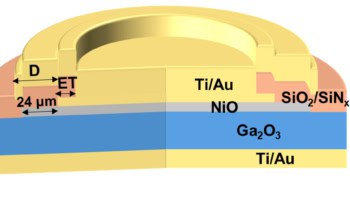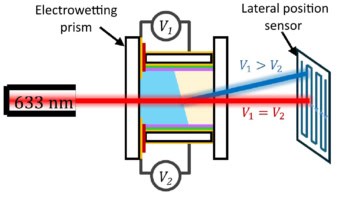
Moiré lattices — wherever they form – are full of surprises. Superimpose two or more 2D periodic patterns on top of each other with a slight twist, and exotic properties will emerge.
A single sheet of graphene is a decent electrical conductor, but when two graphene sheets are stacked into a moiré lattice, the bilayer morphs into a superconductor, a Mott insulator, or a magnet; depending on the twist angle. Analogously, when two light beams “patterned” by masks interact, the resulting moiré lattice can transform the signal beam into a diffuse smear or a single localized spot. Recently, a group of researchers led by Fangwei Ye at Shanghai Jiao Tong University, China discovered that optical moiré lattices can also produce solitons – self-trapped solitary waves – at extremely low power levels.
Solitons in the spotlight
Light tends to disperse as it propagates. For example, a ray of light from a torch gradually spreads out. Earlier this year, Ye’s team discovered a way to stop the spreading and localize a laser into a tight spot using moiré lattices. Now, the same group has taken their findings a step further by exciting the light in moiré lattices into self-sustaining pulses known as solitons. Solitons retain their shape as they propagate over long distances, so they are important in telecommunications as steadfast information carriers.
The enemy of light localization is diffraction. Ye’s optical solitons fend off diffraction by relying on the nonlinear effect, a self-reinforcing phenomenon whereby the medium through which light shines modifies the light’s behavior . Ye’s medium is a photorefractive strontium barium niobite crystal with nonlinear holographic properties. The researchers imprinted a moiré pattern onto the crystal by shining a light beam stenciled by two twisted lattice masks. Then, the researchers shone a second light beam and observed how the beam profile evolved while they changed the masks’ twist angle and the laser powers.
The researchers discovered that their moiré lattices can produce solitons above a certain laser power threshold, depending on the twist angles in the patterning masks. Nonlinearity is a weak phenomenon that usually only manifests at high laser powers. But Ye and his team found that their power threshold is whoppingly low: only nanowatts of power is required – a million times weaker than a laser pointer.
“First observation”
“Our work is the first observation of solitons in moiré lattices,” says Ye. “It turns out, it’s quite easy to create solitons this way.”
The key to the low power requirement is the flat energy band in the moiré lattice. The photons in optical moiré lattices are squeezed into a narrow range of energies at certain twist angles. This energy range only supports certain self-trapped modes of light. The light diffraction is inherently much weaker in such flat energy bands, so only a small nonlinear effect is necessary to generate solitons.
“Thanks to the almost flat bands in moiré lattices,” says Ye, “this experiment brings the power threshold down to an extremely low level, representing a big step in soliton research”.
Moiré surprises?
Optical moiré lattices present a rich playground to look for other elusive nonlinear phenomena, such as four-wave mixing and second harmonic generation. According to Ye, solitons may be just the beginning.



